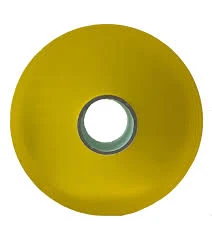- Afrikaans
- Albanian
- Amharic
- Arabic
- Armenian
- Azerbaijani
- Basque
- Belarusian
- Bengali
- Bosnian
- Bulgarian
- Catalan
- Cebuano
- Corsican
- Croatian
- Czech
- Danish
- Dutch
- English
- Esperanto
- Estonian
- Finnish
- French
- Frisian
- Galician
- Georgian
- German
- Greek
- Gujarati
- Haitian Creole
- hausa
- hawaiian
- Hebrew
- Hindi
- Miao
- Hungarian
- Icelandic
- igbo
- Indonesian
- irish
- Italian
- Japanese
- Javanese
- Kannada
- kazakh
- Khmer
- Rwandese
- Korean
- Kurdish
- Kyrgyz
- Lao
- Latin
- Latvian
- Lithuanian
- Luxembourgish
- Macedonian
- Malgashi
- Malay
- Malayalam
- Maltese
- Maori
- Marathi
- Mongolian
- Myanmar
- Nepali
- Norwegian
- Norwegian
- Occitan
- Pashto
- Persian
- Polish
- Portuguese
- Punjabi
- Romanian
- Russian
- Samoan
- Scottish Gaelic
- Serbian
- Sesotho
- Shona
- Sindhi
- Sinhala
- Slovak
- Slovenian
- Somali
- Spanish
- Sundanese
- Swahili
- Swedish
- Tagalog
- Tajik
- Tamil
- Tatar
- Telugu
- Thai
- Turkish
- Turkmen
- Ukrainian
- Urdu
- Uighur
- Uzbek
- Vietnamese
- Welsh
- Bantu
- Yiddish
- Yoruba
- Zulu
Innovative Facade Solutions for Modern Building Design and Energy Efficiency
The Evolution and Significance of Curtain Walls in Modern Architecture
Curtain walls are an essential element in modern architecture, offering both functional and aesthetic benefits to buildings worldwide. This innovative design feature has evolved significantly over the years, transforming the skyline of cities and changing the way architects envision and construct high-rise buildings.
A curtain wall is a non-structural outer covering of a building that is designed to resist air and water infiltration, as well as to provide thermal insulation and sound attenuation. Unlike traditional walls, which bear the load of the building, curtain walls are hung from the building’s structural framework. This allows for greater flexibility and creativity in design, enabling architects to create striking visual effects while maintaining efficient use of materials.
The history of curtain walls can be traced back to the early 20th century. One of the first instances of a curtain wall can be seen in the famous 1924 Daily Express Building in Manchester, England, designed by the architect Sir Owen Williams. This was a groundbreaking moment in architectural design, as it challenged the conventional methods of building enclosures by utilizing glass and steel as primary materials, promoting both light and an open aesthetic. The concept gained popularity through the mid-20th century, particularly with the rise of modernism and the advent of skyscrapers in urban settings.
One of the most iconic examples of curtain wall construction is the Lever House in New York City, completed in 1952. Designed by architects Skidmore, Owings & Merrill, Lever House showcased a seamless glass facade that emphasized transparency, pushing the limits of building design at that time. Such buildings not only revolutionized architectural styles but also paved the way for future advancements in curtain wall technology.
curtain wall

Curtain walls are typically constructed from a combination of materials including glass, metal, stone, and composite materials
. The choice of material significantly impacts the building's overall aesthetic and functional characteristics. Glass curtain walls allow for impressive daylight penetration, which contributes to energy efficiency by reducing the need for artificial lighting during the day. Moreover, these walls can be engineered to provide high insulation values and reduce heat loss, making buildings more sustainable.In addition to their practical benefits, curtain walls also offer vast opportunities for creativity in architectural design. Architects can experiment with various shapes, colors, and textures to create unique facades that define the character of a building. The use of curtain walls has led to the emergence of numerous design trends, such as the introduction of dynamic, interactive facades that can change appearance in response to environmental factors or user engagement.
However, with innovation comes challenges. The installation and maintenance of curtain walls require careful consideration and expertise. Factors such as wind load, thermal expansion, and water drainage must be meticulously addressed to ensure the longevity and integrity of the wall system. Furthermore, as environmental concerns grow, architects and engineers are increasingly focused on making curtain walls more sustainable. This includes the integration of solar panels, green walls, and other eco-friendly technologies into curtain wall systems.
In conclusion, curtain walls have become a defining characteristic of modern architecture, contributing to the aesthetic complexity and functionality of buildings. They symbolize a shift towards more open, light-filled spaces while responding to the challenges of environmental sustainability. As technology continues to advance, it is exciting to anticipate how curtain walls will further evolve, potentially incorporating new materials and smart technologies to enhance building performance and occupant experience.
Today, the curtain wall remains not just a facade; it represents an architectural philosophy that embraces innovation, sustainability, and the deep connection between the built environment and its inhabitants. With their impressive versatility and timeless appeal, curtain walls will undoubtedly continue to play a vital role in the future of architecture. As we progress forward, the challenge will be to balance these designs with the need for resilience and sustainability, forging a path toward a more harmonious relationship between our structures and the natural world.
-
Plastic Curtain for AC – Energy Saving & Easy Installation Perfect for Room and Freezer UseNewsJul.04,2025
-
Industrial Strip Curtains - Durable PVC & Plastic Solutions for Industrial DoorsNewsJun.24,2025
-
PVC Curtain Strip – Durable Standard PVC Strips for DoorsNewsJun.10,2025
-
PVC Strip Curtain – Durable & Transparent Plastic Strips for Industrial Use Affordable PricesNewsJun.10,2025
-
Clear Plastic Door Curtains Durable & Insulating VisibilityNewsJun.09,2025
-
Commercial Strip Curtains Energy Savings & Durability for Industrial UseNewsJun.09,2025



